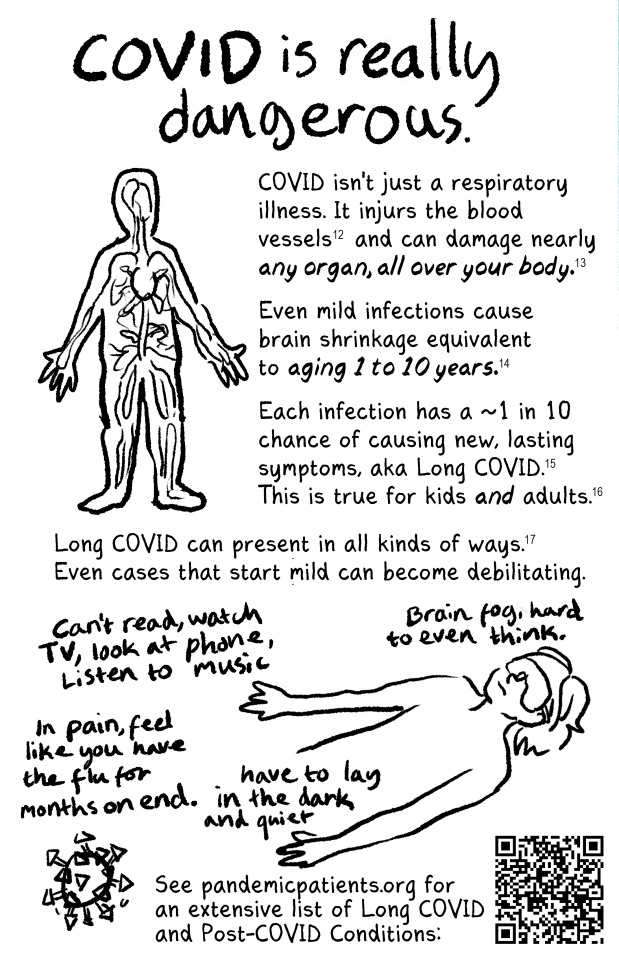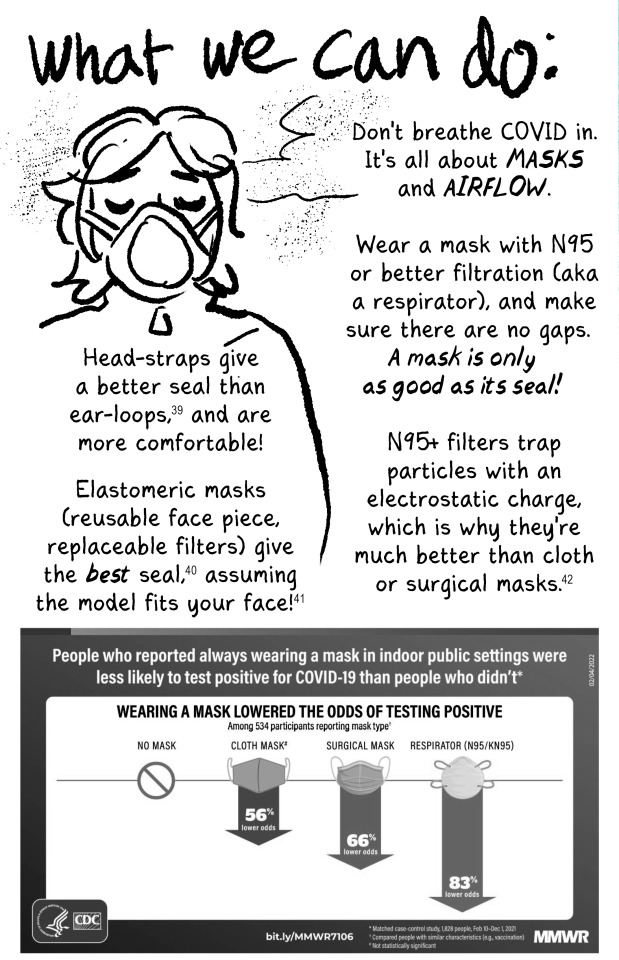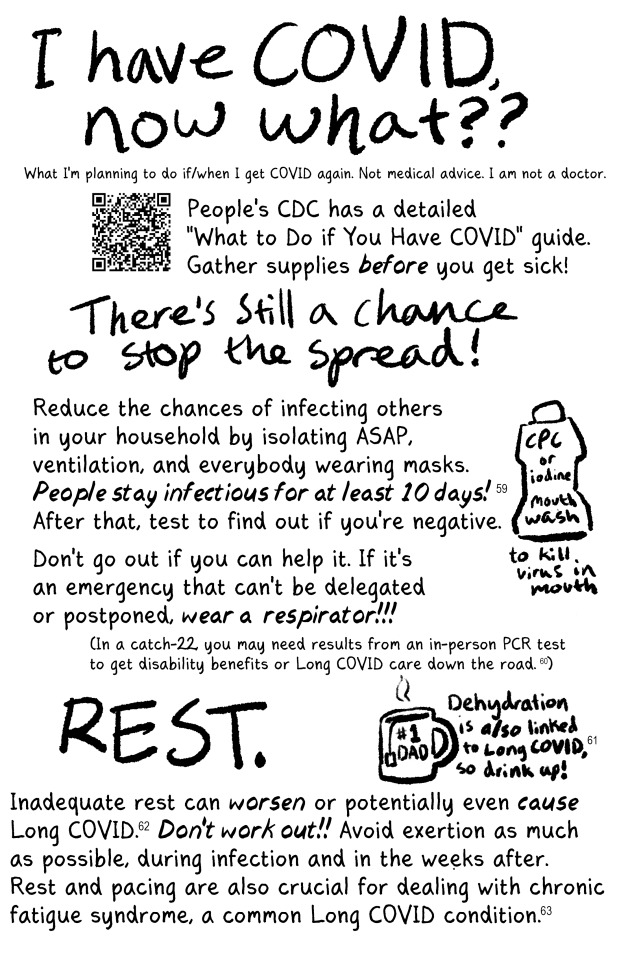Text
As of December this bill is being amended to clarify what is being covered and by who.
Prior to 2016, titanium chairs were covered by insurance, upon which insurance found out they were paying for "unnecessary" upgrades and decided to refuse to cover the chairs outright--meaning you had to pay 100% out of pocket, bill insurance after and Hopefully get partially reimbursed.
This bill would mean Medicare beneficiaries would only have to pay the 20% copay and the difference between aluminum and titanium or carbon fiber frames. And since American insurances model their policies after Medicare policy, other insurances would follow suit.
There is now a bill (HR 5371: Choices for Increased Mobility Act) seeking to expand the type of wheelchair material that insurance will cover. Insurances right now cover aluminium frames, and do not cover titanium wheelchairs. Titanium is a LOT more durable resulting in less cost/replacements and absorbs more shock on bumps which can be a very important thing for people with spine or hip issues.
Please contact your representatives if at all possible! There are scripts in this link:
589 notes
·
View notes
Text
List of things they got wrong for posterity's sake:
Seat depth (If I was a proportionate person with 19" to my knee I would be over 6' tall)
Rear wheels model
Footplate taper (listed as none when I explicitly asked for More taper than exists on my current chair)
Caster forks
Backrest height
And I was right to hound them. 🙃 Finally got the wheelchair place to send me a copy of the order form and they did shit incorrectly.
They listed my seat depth as 19", as in 19" from ass to knee. I am NOT tall. My current chair, which I had with me for the appt, is 17" depth and still digs into my knees a little. How the fuck the order form says 19" is beyond me.
#wheelchair journey#they also added a wheelchair bag???? That I did Not ask for and said I didn't want but whatever
9 notes
·
View notes
Text
And I was right to hound them. 🙃 Finally got the wheelchair place to send me a copy of the order form and they did shit incorrectly.
They listed my seat depth as 19", as in 19" from ass to knee. I am NOT tall. My current chair, which I had with me for the appt, is 17" depth and still digs into my knees a little. How the fuck the order form says 19" is beyond me.
#Trying to say my tiny ass is 19“ from ass to knee 😭 I can't reach cabinets standing the fuck are you talking about#Do you have EYES#.log#wheelchair journey#There was also other stuff they got wrong but the seat depth thing was the egregious one#MRI place is being annoying though they assumed I must not have been seeing the flex/ext images on the cd so now I gotta bring it with me#to the next MRI. As if I cannot navigate Pictures on CD
9 notes
·
View notes
Text
Why must I be up everyone's ass all the time. Why can't we just do what we're supposed to do and then I can leave you the hell alone.
#.log#texting emailing calling all these motherfuckers that should just be doing their jobs 😭#yesterday at the MRI place the guy Almost just did a normal cervical without flex/ext and I had to remind him#And the CD copy of the scans they gave me Only have the normal cervical w/o flex/ext#so now not only did I have to remind him in person but I gotta call the place and be like hey can you actually make sure#the flexion and extension results are sent to the radiologist and Not Just normal cervical#On top of having to call/txt/email both the ATP and the funding person at the wheelchair place#Just fucking!!! Do the job!!!!!!!!!! You won't be annoyed. I won't be annoyed. There's less talking. Things get done
7 notes
·
View notes
Text
Also, today I did baby's first independent tire change on my current chair. Usually I just have someone else do it. I got talked into solid tires on my next chair for less maintenance and because there's a LOT of constant construction in my area (lot of nails and glass), but I do really dislike that you can't change solids yourself without a bench vice. That doesn't matter though if I can't change a pneumatic tire myself so I wanted to see. So: Turns out I can change it independently, though it does hurt my hands a bit.
#I needed to anyway my tires have been flat again because the last tube on one side blew#Although wrt bench vice I could probably just bother the local bike nonprofit like I did when my axle needed fixing#They let me use their tools for free. :3c#.log
8 notes
·
View notes
Text
I really hope that tomorrow's cervical MRI doesn't indicate any neck conditions that require me not moving my head much as part of treatment/a result of treatment because I've been really looking forward to getting back into archery once I get my new wheelchair. :|
6 notes
·
View notes
Note
Could I ask what your gender identity is within nonbinary? Is it like systemfluid?
To white people I am strictly an amorphous and sexless set of particles akin to a fine and imperceptible mist. If you see me no you don't.
#I technically use nonbinary but I find 'nonbinary' to be somewhat restrictive#In that it positions me still along the axis of western gender concepts#I use the label solely to make communicating things simpler#So basically I would not like to ascribe an even more specific label to myself#But no out of all things I would not consider DID to be a big factor in my gender. Being intersex had a bigger impact For Me Personally#ask#anonymous
10 notes
·
View notes
Text
I really wonder whether in a few years we'll see something similar to post-encephalitic parkinsonism because of COVID. Where years and decades after the actual epidemic, survivors of the virus began having Parkinson's-like symptoms due to the damage done to their brains as described in Sacks' book Awakenings.
The longcovid research being done showing this is a whole systems issue with effects on the nervous system, autoimmune system, etc. And with people not taking it seriously at all, not getting tested, CDC not tracking tests, etc it would be difficult to tie symptoms that show up years and years later to contracting COVID.
17 notes
·
View notes
Text

New zine that's free for anyone to print and distribute! Read the whole thing at newlevant.com/COVIDzine or in the rest of this post.














12K notes
·
View notes
Note

free him

He now has all the tools he needs to Free Himself from the shackles of man. 😌💕
#ask#tomcatyowls#Image editing skills and software are not advanced enough to open the lid without taking his ears off 💔💔💔💔💔💔💔💔
14 notes
·
View notes
Text
Can't believe this needs to be said but if you're a "radqueer" or "radpara" whatever the hell new term you people keep making every year using to justify making public fucking posts about wanting to fuck children, you go as far as possible from me. Preferably to hell btw. ✌️
#.log#the WAY the 'politics' on social media has backslid so fucking much the past few years lmfao#we got people being like 'not all men have male privilege...because some of them are gay or disabled or brown!!!'#as if Nobody had ever thought about this before and as if Nobody has ever written (extensively) about this before#the tags are unrelated to the OP I am simply so fed up with so many of you#you're all splashing around in a puddle on the sidewalk thinking it's deep shit. 😭 Read a goddamn book and get out of my face#pedophilia .
12 notes
·
View notes
Text
I've seen adaptive fencing, adaptive sailing, sit volleyball, and adaptive dog agility. :) Here's a site with a list:
https://moveunitedsport.org/sports/adaptive-sports/
Adaptive / Para sports that aren't wheelchair basketball!
Wheelchair rugby: very physical, wheelchairs look like battel bots, very rough and very cool I don't know much about the rules of regular rugby either. Tried it once was not for me but very epic to watch
Adaptive curling: played with a stick that attaches to the curling rock so you can play from a seated or standing position, good for those who can't bend over or who require mobility aids
Wheelchair tenis: played just like normal tennis in a sports wheelchair rackets have shorter handles to be easier to push while holding, difference to the rules being that the ball can bounce twice
Adaptive archery: so many different adaptions from shooting in a wheelchair, using prosthetics, mouth release triggers for those without use or with lim differences in arms
Adaptive skiing/snowboarding: good for those with lower lim differences and mobility issues. Adaptions include using one leg with outriggers to balance and stear (both ski and snowboard) sit ski, where your entire lower body is basically in a ski boot, can be used for blind people as well or those with upper body limitations with an assistant controlling the sit ski. Independent sit ski use outriggers for stearing (think like ski poles with little skis on them)
Adaptive rowing: good for all ability levels as well as blind and visually impaired. So many different adaptions for loading into boats, seating supports, adaptive paddles and auditory cues
Adaptive swiming: this has so many different options, swimming is amazing for you it let's you use you body in different ways then weight bearing and there are a lot of options, different flotation devices that can attach to legs or arms, having someone move your lims for you, having a tap signal when you get close to the edge of the pool, visual cues for time, pool lifts just so many different options for everyone
Biking: standing bikes, two seated bikes so people with vision problems can have someone stearing, electric bikes, electric assist with pedaling, strap in pedals, anti tips, tricycles, hand cycles, different levels of seating support, walking bikes, you can ride behind someone in a bike, lots of university's will have indoor bike tracks so that you can ride on flat low resistance ground
Para hockey: this is my sport, I play competitively so I know a lot more about it. Para hockey (also know as sledge hockey) is played sitting down in something called a sledge. You have two sticks with spikes on the ends in order to propel yourself on the ice. There are a bunch of modifications possible for sleds with high back support with straps for those without core control, for those with upper body limitations there are pushers who attach a push handle to the back of your sled in order to move you around the ice, if you have no grip strength you can tape or otherwise secure you sticks to your arms/prosthetic. Rules for para hockey are the same as for stand up hockey with the exceptions being, periodes are 15 minutes and there is an additional type of penalty called Teeing for purposful front of sled contact to another persons sled without angling. Rules wise in grassroots (basic introductory sledge) anyone can play no matter their ability so abled family and friends can join you. Above the intermediate competitive level however, all players must have an impairment that affects their lower body in a way that means they do not have the capacity to play stand up hockey even at a lower level.
Blind hockey: Blind hockey is played pretty much the same as regular hockey, all players have a severe visual impairment/blindness and it is played with a large hollow puck that jingles so players know where it is
Anyone feel free to add more! There are so many different ways to have fun and be active as a disabled person the first step is just learning that they exist!
251 notes
·
View notes
Text
I'm convinced most sites who publish those "best countries for disabled people" "most accessible countries/cities" type articles have never actually spoken to a disabled person or been to the places they're saying are so great.
So much of the time they'll prattle off a place that is NOT accessible at all, like saying Japan is soooo accessible and one of the Best countries for disabled people because their trains have wheelchair ramps and designated wheelchair spots on the train. But you look at travel posts by wheelchair users and they're like "the trains are the only accessible part of Japan btw most restaurants are on the 2nd or 3rd floor, no elevator, and you have to leave your wheelchair Outside The Building. Everything has steps and the stone paths are inaccessible." Article listed Italy as one of the top 20 disability friendly countries in the world, citing their work to make places accessible, yet I JUST watched an Italian wheelchair user say that Italy is largely inaccessible and he can't live independently there as of 2023.
Like? What is going on. 😭 How exactly are we determining the "accessibility" of such places? Are we just believing the travel brochures or something?
#wheelchair user#cripple punk#.log#I was trying to see what countries give the most disability benefits and are the most accessible just out of curiosity#like if Somewhere in the world there are disabled people living relatively comfortably without having rich parents#or having to fight tooth and nail for everything they have#like...just the basics of your own place w/o being Required to have roommates. Healthcare. You can go places without planning extensively
42 notes
·
View notes
Text
Like I just don't think the way towards effective disability solidarity is doubling down on how all disabilities are basically the same. I think what we need to do to get anywhere is take a step back and listen when someone who is disabled in a different way than we are has different experiences and needs. Because while ALL disabilities are real, valid and serious, there are differences in lived experiences worth acknowledging and exploring between, let's say, being a wheelchair user and being autistic and being psychotic. There are even differences worth noting between being a low support needs autistic person and a high support needs autistic person. We're not all the same. And our solidarity should not depend on claiming that we are
1K notes
·
View notes
Text
MRIs scheduled. 4 separate appts. 🙃 But hopefully we can finally figure out what's going on with my neck and spine.
MRI place finally is available for scheduling and they've decided they want to split my scans into 4 separate appts. It's 4h round trip because they're the closest one that has flex/ext MRIs. :|
The claim is that insurance will only cover one scan at a time except I have definitely had multiple MRI scans done in one visit before. So. I guess I have to decide whether that's worth bothering the front desk scheduler to talk to the insurance person about.
14 notes
·
View notes
Note
If it's okay to ask, is there a type of brake that you'd recommend for active manual wheelchairs?
I'm not the best person to ask about this. I've only ever had the standard push to lock brakes and I've only ever Tried someone else's scissor brakes once. And I tried their brakes from next to them and not in their chair which makes a huge difference. I'm not big on change either so there would need to be a reason why I change from push to locks, if I do. All I can say is your dexterity, hand function, and arm length can come into play when choosing brakes.
@urbancripple might be better to ask? I'll put this in tags as well for others to answer.
5 notes
·
View notes
Text
If you would like an actual answer that isn't just...opinions. I've been diagnosed and in DID spaces for a bit over a decade so I've had a frontrow seat to all this.
"Endogenics" were previously called "natural multiples" (as in, natural MPD). Natural multiples back then had a DID diagnosis, and their argument was essentially on the MAD Pride level of saying that they weren't disordered for surviving. It morphed into saying that they just had alters from birth instead of being traumatized into forming alters, as a way of saying that their experiences aren't disordered and a way of distancing themselves from the concept of trauma. You can find a bunch of WordPress blogs about this by searching for natural multiple/natural multiplicity/natural MPD.
The problems began to arise when people who identified as naturally multiple began to outright state that DID doesn't exist, and that people who were diagnosed with DID don't have disorders and are actually all just like that from birth. It shifted from personally not identifying with a diagnostic label to trying to tell strangers how their brains work.
With the "born this way" rhetoric, people who did not have a DID diagnosis began to identify as naturally multiple. People began to appear in DID spaces who did not have DID, who mostly had a ton of misinformation to say because...well...they don't have DID. The massive problem with this was that they often weren't just talking about themselves, they were trying to give advice, and giving it primarily in DID spaces. Such as coming up to strangers online and telling them they have alters and that it's Completely Natural without remotely suggesting that they rule out physical/neurological conditions or DID (which was more dangerous than it is now since there really weren't many people who Knew about DID back then and there were Not any easy to access resources at all), saying things like if you dislike your alter just murder them, telling people who did have DID that they actually did not have trauma at all, telling people that spiritual entities are the cause of their systems when those people had religious trauma, etc etc. There were also issues with grooming (where people would say that they have x age alter and therefore can date a minor because "they're the same age" etc) and harassment in general. These were really widespread issues and were constant in DID spaces, particularly because DID communities were MUCH smaller back then. Endogenic as a term came because people with DID were emphasizing that this is a traumagenic disorder that is being treated this way.
A lot of people, particularly ones that have been around a while, have a lot of Very Bad experiences and history with endogenics as a result. The vast majority of people in the community back then simply wanted endogenics to stop talking in DID spaces and stop equating their experiences with DID due to the fact that applying things like "murder your alters" or "I can actually see everything going on in your mind because I'm also a system" to DID is actively harmful. There were also quite a few people, both with DID and without, who began lashing out at endogenics. Naturally as with all discourse it's gotten kind of...warped so you'll have people who are vehemently of one opinion or another just because they feel like they have to pick a side, but that's the Gist of it.
As a traumagenic system, why do other traumagenic systems dislike endogenic systems? So many post about systems I see are tagged "endos dni" and "fuck endos", why are we so aggressive to them? Aren't they just stuck with a similar condition to ours but from a difference source? Can someone explain to me why we're being so mean??
#sycourse#< for tw#the bad advice was a MUCH bigger deal also because there were not many resources back then like I said#googling it didn't bring up books or anything. You had to dig. It's why I became good at reading research papers
460 notes
·
View notes